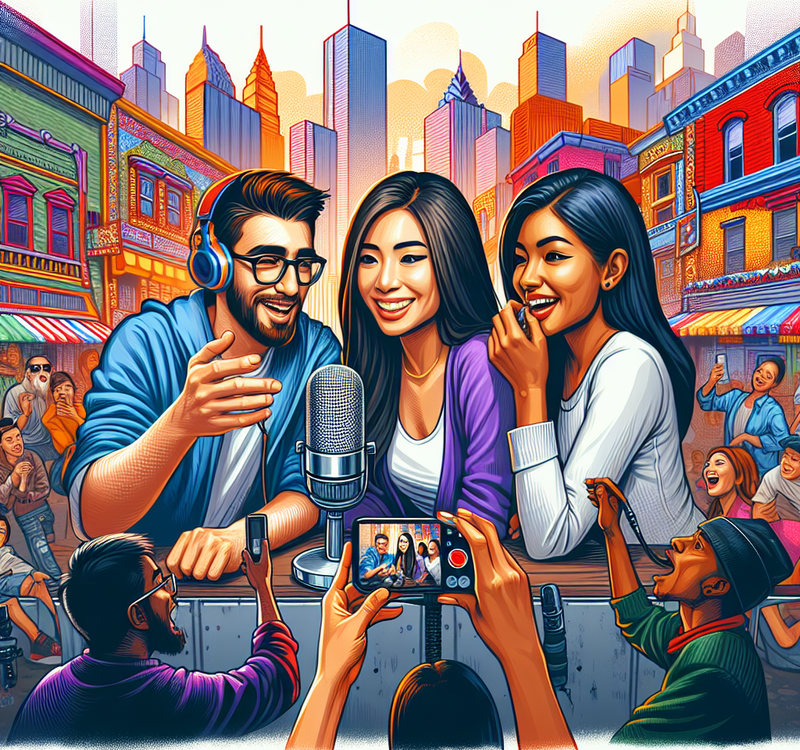
The Power of Fashion and Style Influencers: How They Can Transform Your Marketing Strategy
30 September، 2023
Optimal Content Frequency: How Often Should Influencers Publish?
1 October، 2023Beware of Deception: Unveiling the Dark Side of Micro Influencers and Fake Followers

Title: Beware of Deception: Unveiling the Dark Side of Micro Influencers and Fake Followers
SEO Meta-Description: Discover the dark truth about influencers and the hidden dangers of fake followers on Instagram. Learn how influencers acquire fake followers and how to spot a fake influencer. Explore the ethical implications of influencer marketing and its impact on advertising and consumer protection in the single market.
Introduction:
In today’s age of social media dominance, influencers have become a key component of marketing strategies. However, beneath their glamorous online personas lies a darker side that often goes unnoticed. This article aims to delve into the world of micro influencers and fake followers, shedding light on the potential dangers and ethical concerns surrounding this practice.
What is the Dark Truth about Influencers?
Heading 2 (H2): The Rise of Influencer Marketing
Content: Influencer marketing has witnessed an exponential rise in recent years, with brands leveraging the popularity and reach of influencers to promote their products and services. However, along with this growth comes various challenges and pitfalls.
Heading 2 (H2): The Authenticity Crisis
Content: One major issue surrounding influencers is the lack of authenticity. Many influencers resort to buying fake followers to boost their social media presence and enhance their perceived influence. This unethical practice undermines the trust between influencers and their followers.
Heading 3 (H3): The Impact on Brands and Consumers
Content: Brands that collaborate with fake influencers not only waste their marketing budget but also risk damaging their reputation. Consumers, on the other hand, may fall victim to deceptive marketing tactics and make purchases based on false endorsements. This can have a detrimental impact on consumer trust and confidence.
Unmasking the Dark Side of Instagram Influencers
Heading 2 (H2): The Mechanics of Fake Followers
Content: Influencers acquire fake followers through various means, such as purchasing them from online platforms or using automated bots. These fake followers not only inflate their follower count but also create a false perception of influence and popularity.
Heading 3 (H3): Detecting Fake Influencers
Content: Identifying fake influencers can be challenging, but there are telltale signs to look out for. Low engagement rates, sudden spikes in follower count, and questionable content quality are some red flags. It is essential to use tools like SocialBlade and HypeAuditor to assess an influencer's authenticity.
The Ethics of Influencer Marketing
Heading 2 (H2): Balancing Business and Ethics
Content: Influencer marketing raises ethical concerns that cannot be ignored. Brands must ensure that their collaborations with influencers are transparent and comply with legal and ethical standards. This includes disclosing sponsored content and avoiding deceptive practices.
Heading 2 (H2): Influencer Law and Consumer Protection
Content: The impact of influencers on advertising and consumer protection in the single market cannot be underestimated. Regulatory bodies are increasingly scrutinizing influencer marketing practices to protect consumers from misleading advertisements and ensure fair competition.
Spotting Authenticity in the Age of Deception
Heading 2 (H2): Evaluating Influencer Authenticity
Content: To spot a genuine influencer, it is crucial to assess their engagement rates, content quality, and follower growth patterns. Authentic influencers will have meaningful interactions with their followers and experience a gradual, organic increase in their audience.
Heading 2 (H2): Trusting the Right Influencers
Content: Building trust with influencers is key for both brands and consumers. It is essential to collaborate with influencers who align with a brand's values and have a track record of authenticity. Genuine influencers can be valuable partners in spreading brand awareness and driving meaningful engagement.
Conclusion:
The dark side of micro influencers and fake followers is a growing concern in the world of social media marketing. Brands and consumers alike must be vigilant in discerning genuine influencers from those who engage in deceptive practices. By prioritizing authenticity and ethical collaborations, we can create a more transparent and trustworthy influencer ecosystem.
FAQs:
FAQ 1: What is the impact of buying fake followers on an influencer's reputation?
Content: Buying fake followers can severely damage an influencer's reputation. It undermines their credibility and trustworthiness, making it difficult for brands and followers to rely on their recommendations.
FAQ 2: How can brands protect themselves from collaborating with fake influencers?
Content: Brands should conduct thorough research on influencers before entering into collaborations. Analyze their engagement rates, follower growth patterns, and overall content quality. Utilize tools like SocialBlade and HypeAuditor to assess an influencer's authenticity.
FAQ 3: Are there any legal consequences for influencers who acquire fake followers?
Content: In some jurisdictions, acquiring fake followers can be considered fraudulent activity, which can lead to legal consequences for influencers. Regulations surrounding influencer marketing are evolving, and influencers must stay updated with the legal requirements of their respective regions.
FAQ 4: How can consumers protect themselves from falling for deceptive influencer marketing?
Content: Consumers should be critical and discerning when evaluating influencers' endorsements. Look for meaningful interactions between influencers and their followers, question sudden spikes in follower counts, and consider the overall quality of content before making purchase decisions.
FAQ 5: What are some industry-wide initiatives to combat fake influencers?



